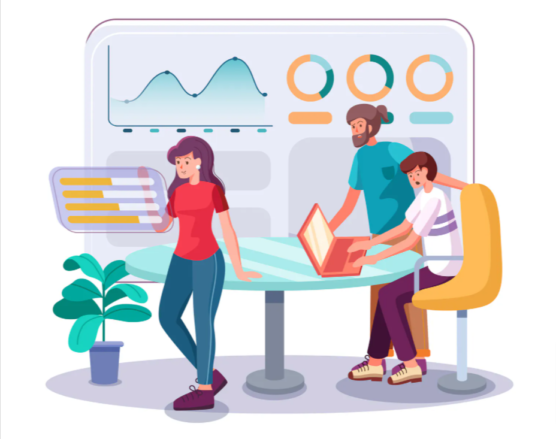In the ever-evolving landscape of digital marketing, Search Engine Optimization (SEO) stands as a critical component for driving online visibility and engagement. With the advent of Artificial Intelligence (AI), the methodologies and strategies employed in SEO have undergone significant transformations. AI's capabilities in data processing, automation, and predictive analytics have opened new avenues for SEO professionals, allowing for more efficient, accurate, and strategic optimizations. This article delves into the multifaceted ways AI is changing the work of SEO.
1. Automation and Efficiency
One of the most significant impacts of AI on SEO is the automation of repetitive tasks. Traditional SEO requires considerable time and effort in areas such as keyword research, backlink analysis, and on-page optimization. AI-powered tools like Moz, Ahrefs, and SEMrush automate these processes, enabling SEO professionals to focus on strategy and creativity.
AI algorithms can swiftly analyze vast datasets to identify high-performing keywords, optimal content structures, and backlink opportunities. For instance, tools like Google's AI-powered RankBrain and BERT (Bidirectional Encoder Representations from Transformers) understand user queries better and provide more relevant search results. This means SEO professionals must adapt their strategies to align with these AI-driven algorithms, ensuring their content is optimized not just for keywords but for intent and relevance.
Introducing SFWPExperts integrates cutting-edge Artificial Intelligence to enhance WordPress website design and development. Leveraging AI, they deliver personalized user experiences, intelligent automation, and advanced analytics. Their expertise ensures innovative, efficient, and user-centric solutions, setting a new standard in the digital landscape.
2. Data Analysis
The ability to process and analyze massive amounts of data is a hallmark of AI. SEO involves continuous monitoring and analysis of website performance, traffic patterns, user behavior, and competitor activities. AI excels in this domain by identifying patterns and insights that might be overlooked by human analysts.
Tools like Google Analytics leverage AI to provide deeper insights into user behavior, allowing SEO professionals to understand how users interact with their websites. AI can segment audiences based on various criteria such as demographics, behavior, and preferences, enabling more targeted and effective SEO strategies. Additionally, AI-driven predictive analytics can forecast future trends and user behavior, helping SEO professionals to stay ahead of the curve.
3. Content Creation and Optimization
Content remains king in the world of SEO, and AI has revolutionized how content is created and optimized. AI-powered tools like GPT-4, developed by OpenAI, can generate high-quality content that is engaging and relevant. These tools can assist in creating blog posts, articles, and social media content, reducing the time and effort required for content creation.
Furthermore, AI can optimize existing content by analyzing factors such as readability, keyword density, and engagement metrics. Tools like Grammarly and Hemingway App use AI to suggest improvements in grammar, style, and readability, ensuring that content is not only optimized for search engines but also for human readers. AI-driven content optimization tools can also identify content gaps and opportunities, guiding SEO professionals on topics that are likely to resonate with their target audience.
4. Personalization
Personalization is a key trend in digital marketing, and AI plays a crucial role in delivering personalized user experiences. AI algorithms analyze user data to understand individual preferences, behaviors, and search intents. This allows SEO professionals to tailor content and search results to meet the specific needs of users.
For instance, AI can help in creating dynamic content that changes based on user behavior and preferences. E-commerce websites can use AI to recommend products based on past purchases and browsing history, enhancing the user experience and increasing conversion rates. Personalized email marketing campaigns powered by AI can also drive higher engagement and click-through rates, contributing to overall SEO success.
5. Voice Search and Natural Language Processing (NLP)
The rise of voice search has added a new dimension to SEO. With the increasing use of virtual assistants like Siri, Alexa, and Google Assistant, optimizing for voice search has become imperative. AI-driven Natural Language Processing (NLP) technologies enable search engines to understand and process natural language queries, which are often longer and more conversational than text-based queries.
SEO professionals must adapt their strategies to optimize for voice search by focusing on long-tail keywords and conversational phrases. AI tools can help identify these keywords and provide insights into user intent behind voice queries. Additionally, AI can analyze the context and semantics of content, ensuring that it aligns with the way users naturally speak and search.
Read More: How AI Changes The Work Of SEO
Read More Articles:




